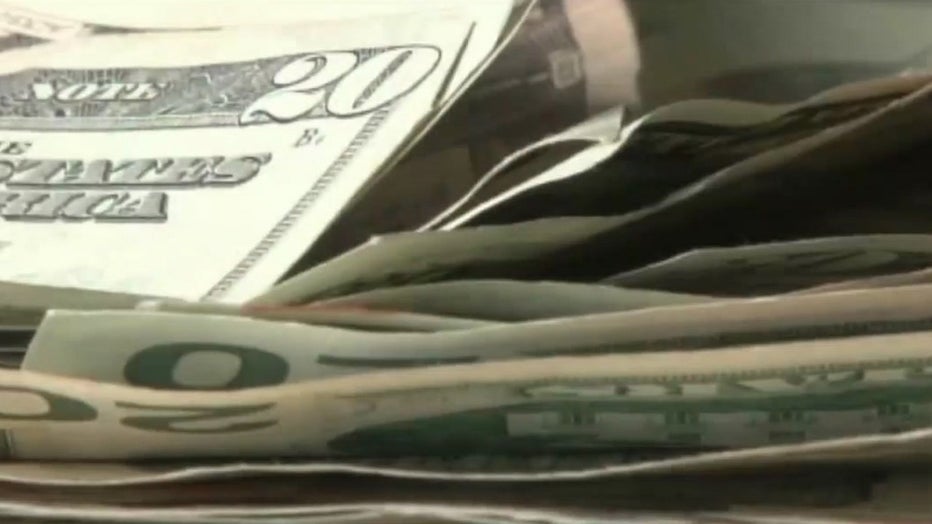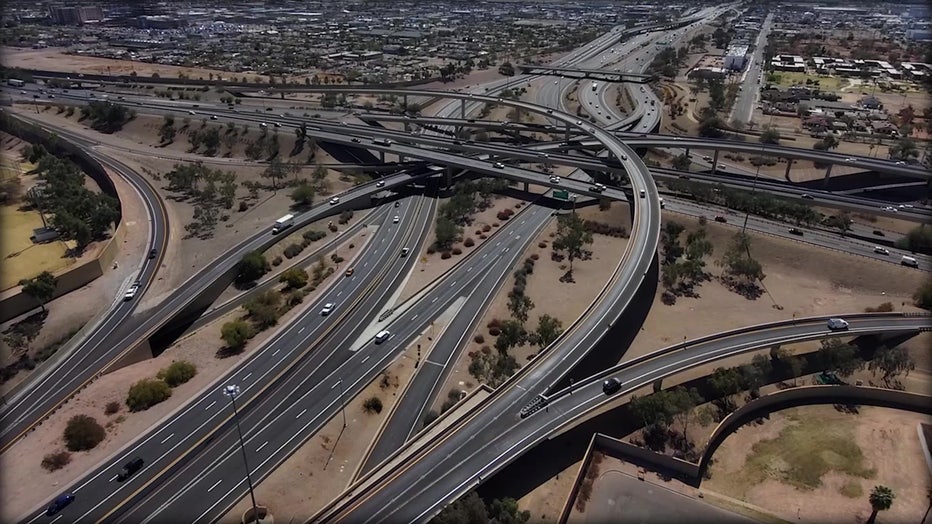Proposition 479: What to know about the Maricopa County transportation initiative

PHOENIX - Come November, voters in Maricopa County will weigh in on one measure that is specific to that county, and the results could affect transportation projects for years to come.
Here's what to know about Proposition 479.
What is Proposition 479?
Per a publicity pamphlet issued by Maricopa County, Proposition 479, if approved, will extend a half-cent sales tax for another 20 years, until Dec. 31, 2045.
"This excise (sales) tax revenue would be used to build new freeways, widen existing freeways and highways, expand and rehabilitate the region’s arterial ‘grid’ street system, expand regional bus services, provide Americans with Disabilities Act (ADA) paratransit services, and expand the region’s high-capacity transit system," read a portion of the pamphlet. "All proposed projects to be funded from the proposed excise (sales) tax and other funding available to the region are specified in the Maricopa Association of Governments (MAG) Regional Strategic Transportation Infrastructure Investment Plan."
Is this a new tax?

This is not a new tax, as Maricopa County residents have been paying the tax for decades.
Per the pamphlet, voters in the county approved the half-cent sales tax in 1985. The tax was renewed for another 20 years in 2004.
According to the official results from the 2004 general election in Maricopa County, over 647,000 people, or 57.68% of those who voted, approved what was then known as Proposition 400.
"Since 1985, the half-cent sales tax has been used to build the region’s transportation network. It has provided funding to construct Loops 101, 202, and 303 and State Routes 24, 51, and 143; support regional bus transit and the regional light rail system; and widen and build hundreds of miles of arterial streets," read a portion of the pamphlet.
How much money is the tax expected to generate?
Figures listed in the pamphlet state that from 2026 to 2045, the half-cent sales tax is expected to generate around $14.9 billion, based on purchasing power in 2020.
Specifically, the measure states that 40.5% of the revenue will be allocated to freeways and other routes in the state highway system, while 37% will be allocated to public transportation, and 22.5% will be allocated to "arterial streets, intersection improvements and regional transportation infrastructure."
What projects will the measure help fund?

Two freeways intersect in the Phoenix area.
Officials say proceeds from the sales tax continuation will help fund projects listed in the Regional Strategic Transportation Infrastructure Plan, which was approved by various mayors and elected leaders within the region. Proceeds from the half-cent sales tax make up 53% of funding for the various projects, with the rest being met by the State Highway User Revenue Funds, the Federal Transit Funds, and Federal Highway Funds.
"The Investment Plan includes 331 new freeway/highway lane miles, 134 new high occupancy vehicle (HOV) lane miles, 43 new or improved traffic interchanges, 19 new direct HOV ramps, and three new or improved system interchanges," read a portion of the pamphlet.
Some of the major road projects that the tax will help fund include:
- Completing the Gateway Freeway, also known as State Route 24, in the Southeast Valley
- Building the Tres Rios Freeway, also known as State Route 30 or the Interstate 10 Reliever, in the Southwest Valley between Loop 303 and Interstate 17.
- Building interim improvements for the Tres Rios Freeway between State Route 85 and Loop 303.
- Widening and improving I-17 from the "Split" interchange with I-10 to Loop 101
- Widening I-10's westbound lanes from Loop 101 (Agus Fria Freeway) to I-17.
The pamphlet also states that the Regional Strategic Transportation Infrastructure Plan also includes investments in public transit, such as:
- Nearly doubling the region's existing funding for bus operations and partnering with local jurisdictions
- Expanding existing commuter bus service
- Helping to establish more than 28 miles of bus rapid transit in the region
- Partnering with local cities on rail projects, like a westward light rail expansion along I-10 and in West Phoenix, as well as a planned streetcar expansion in Tempe and Mesa.
The plan also includes more than 1,000 miles of new or improved streets, with $2.9 billion allocated to such projects.
What are supporters saying about Prop 479?

A light rail train in Phoenix. (From File)
The pamphlet listed a number of arguments for and against the ballot measure.
Some supporters of the measure say it will help improve the lives of county residents in a number of ways.
"A 2022 needs assessment revealed that over 80% of Arizona [Community Health Centers] identified transportation as a major barrier to healthcare services. Prop 479 ensures patients can reliably get to medical appointments, whether by car, bus, or mobility van," read a portion of a joint argument written by Jessica Yanow and Jennifer Longdon with the Arizona Alliance for Community Health Centers.
"The projects funded by Prop 479 not only ensure our transportation system can handle the demands of a growing population, but they also play a crucial role in improving the quality of life and health outcomes for all residents, particularly older adults," read a portion of a joint argument written by Brendon Blake and Dana Marie Kennedy with AARP Arizona. "As we age, we are more likely to become isolated, which can negatively affect our physical and mental health. This is why we support investments like those funded by Prop 479 that allow older Arizonans to participate in social activities and be active in their communities, whether they drive, choose other options like public transportation, or need the additional support of dial-a-ride."
What are opponents saying about Prop 479?

A Valley Metro bus. (From File)
Some opponents allege the measure funds a public transportation system that, in their opinion, is scarcely used.
"I wouldn't [be] opposed to this funding except every time I drove [past] one of these huge shiny contemporary buses, I scan to look inside, and it is so sad to see it all empty," wrote Diama Marshall of Chandler. " For the few times I see - it's just one and no more than 2 riders."
Two officials with the Arizona Free Enterprise Club, Scot Mussi and Aimee Yentes, call the measure a "transit slush fund masquerading as a transportation plan."
"The proposed $70 billion dollar boondoggle would divert nearly as much money to build light rail and other transit projects as it does to build freeways," read a portion of their joint arguments against the measure. "Even worse, millions they claim are set aside in Prop 479 for street improvements are actually earmarked for ‘road diets,’ a crazy plan designed to narrow existing roads and replace them with vast sidewalks and protected bike lanes."
What do the polls say about Prop 479?
Figures from a poll conducted by Noble Predictive Insights from August 12 to 16 show that 64% of those surveyed support Prop 479, with 18% opposing and 19% not sure of their position on the measure.
"Prop 479 has had majority support from Maricopa County voters for more than a year – and, notably, opposition to the renewal has not changed in the past year," read a portion of a news release on the poll.

